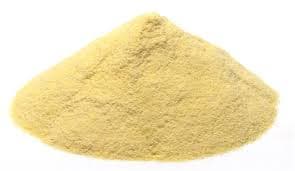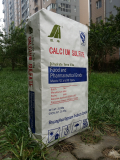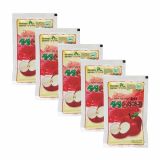Semolina Flour
Negotiable Min Order Quantity Unit
- Required Quantity
-
- Place of Origin
- Thailand
- Brand name
- semolina flour
- Payment Terms
- Negotiable
- Production method
- Negotiable
- Shipping / Lead Time
- Negotiable / Negotiable
- Keyword
- semolina flour
- Category
- Food Ingredients
Thaitoscat Food Supply International
- Verified Certificate
-
10

| Product name | Semolina Flour | Certification | - |
|---|---|---|---|
| Category | Food Ingredients | Ingredients | - |
| Keyword | semolina flour | Unit Size | - |
| Brand name | semolina flour | Unit Weigh | - |
| origin | Thailand | Stock | - |
| Supply type | - | HS code | - |
Product Information
Semolina is a granular flour with a light yellow color. It is produced from durum wheat, which is used almost exclusively for making pasta. Durum wheat has the ideal properties for making the best pasta. It is high in protein and gluten, which are necessary components for pasta making.
Semolina flour is available coarsely ground or ground twice for a fine texture. Besides pasta, semolina flour is occasionally used for gnocchi (an Italian dumpling), various breads, and a variety of other baked goods. Bread made with semolina flour has a crispy crust and a chewy interior
Semolina is a granular flour with a light yellow color. It is produced from durum wheat, which is used almost exclusively for making pasta. Durum wheat has the ideal properties for making the best pasta. It is high in protein and gluten, which are necessary components for pasta making.
Semolina flour is available coarsely ground or ground twice for a fine texture. Besides pasta, semolina flour is occasionally used for gnocchi (an Italian dumpling), various breads, and a variety of other baked goods. Bread made with semolina flour has a crispy crust and a chewy interior
B2B Trade
| Price (FOB) | Negotiable | transportation | - |
|---|---|---|---|
| MOQ | Negotiable | Leadtime | Negotiable |
| Payment Options | Negotiable | Shipping time | Negotiable |
- President
- Suthep
- Address
- 236 Moo5 Tumbol Tah-Sood, Muang, Chiang Rai 57100,Thailand
- Product Category
- Food Ingredients
- Company introduction
-
Types of Flour Ground from Wheat
One of the primary reasons for the popularity of wheat flour is due to its gluten forming capacity when the flour is mixed with liquid. Gluten is the substance that provides dough with elasticity and the ability to stretch as the leavening agent produces carbon dioxide gas, which enables the dough to rise effectively. The more protein in the wheat flour (as is the case with flour milled from hard wheat), the more gluten is formed when the flour is mixed with liquid.
Various types of wheat are milled into a wide range of flours that are used for specific purposes:
- Hard wheat varieties, including hard white, hard red winter, and hard red spring wheat have a high protein content (ranging from 10 to 14 percent), which means the gluten forming capacity is also higher. This characteristic makes hard wheat flour varieties, (which includes bread flour, gluten flour, and many of the whole-wheat varieties), especially suitable for baking yeast breads and similar products.
- Soft wheat varieties include soft white and soft red winter, which are both used for products, such as cakes, cookies, and pastries that do not require the same level of leavening capability as yeast breads. The protein content of soft wheat varieties, such as cake and pastry flour, usually ranges from 6 to 10 percent.
- Durum wheat is the hardest wheat grown. It is used almost exclusively for making pasta and is most often ground into a granular flour with a light yellow color known as semolina, which has the ideal properties for making the best pasta. (Italian pasta makers never refer to semolina as flour - they refer to it as grain.) Durum is high in protein and gluten, which are necessary for making good pasta. It is occasionally used for baked goods (especially risen breads), but it is not used for this purpose as often as other wheat varieties.
- Main Product



































 Thailand
Thailand






